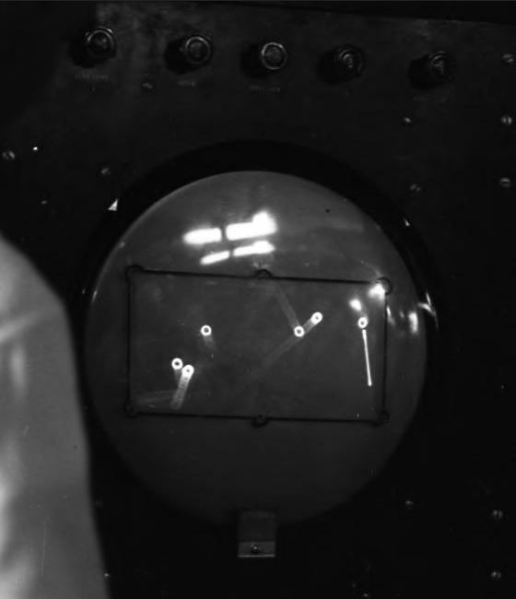When it comes to the first known digital video game (i.e. an interactive game implemented on a digital computer communicating its state by some kind of graphical display), it’s always also about a question of definition. Personally, I’d opt for a requirement of a digital computer running a simulation in real-time and providing means of interactive manipulation of said simulation by some kind of user input (without any interruption to the flow of the program). By this, we define a distinctive problem class for this, namely visual real-time computing. So a turn based game, like OXO, wouldn’t be a member of this class, while, say, Spacewar! would happily fit the definition.
So I’d like to divert your esteemed attention to a certain, lesser known edge case, “Pool”, implemented by William George Brown and Ted Lewis in 1954 on the one-of-a-kind MIDSAC computer.
MIDSAC was one of a pair of machines developed at the University of Michigan during 1951 and 1953 under the sponsorship of the United States Airforce, the general purpose MIDAC (the Michigan Automatic Computer) and MIDSAC (Michigan Digital Special Automatic Computer), designed for real-time operations. Both machines were designed to share principal building blocks and circuits developed by the National Bureau of Standards (NBS) for use in the SEAC (1951) were selected as a basis for this. The circuit design was by J. Kaufman, assisted by R. Hooks and B. Smith, under the supervision of J. E. Turk. While a description of the circuitry is found here “Basic circuitry of the MIDAC and MIDSAC” (PDF download), few is known about the capabilities of the MIDSAC. What we do know, however, is that it performed 25,000 calculations a second by the means of 18,000 solid state gates (“germanium dials”) and 1,200 vacuum tubes, and featured a 13 inch “fluorescent screen” CRT display (by all means a XY-display of some kind, vector or merely point plotting). (Sadly, there’s no entry on this in the BRL Report.) MIDSAC was then said to be “the world’s fastest known computing device.” (William G. Brown quoted in the Chicago Tribune.)
(MIDSAC Pool, 1954, image: ultimatehistoryvideogames.jimdo.com)
Not so much is known about the game, either. However, we do have a photo, which is found together with the best collection of information on the subject (the most of which is derived from a contemporary article in the Chicago Tribune) at the Utimate history of Video games site, Pool - Ultimate History of Video games
According to this, the game displayed a 2-inch rendition of the pool cue (compare the photo above) for the players to line up their shots and ran a simulation of the colliding and ricocheting balls in real-time, implementing a full game of a cue ball and 15 balls for two players. Graphics were drawn in real-time, updating the screen 40 times a second. However, for time constraints, the table and its pockets weren’t drawn by the computer graphics, but rather drawn by grease pen on the display. Also notable may be the use of joysticks to control the game. (Is this the earliest known use of joysticks for a purpose like this?)
So, was this the first digital video game, we know of? This may be a difficult question. Certainly, it was running and rendering in real-time, but, on the other hand, sticking to our above definition, Pool is still a turn based game, missing the real-time interaction part (which is also a treat of the real game simulated by the program). However, there have been plenty of Pool games when video games were an established genre, and we certainly do regard them as one of them. It’s still missing part of the definition, but, once the full class had been established for real, we would happily accept it as a member of this class. But for this to happen, we still had to wait for Spacewar!…
